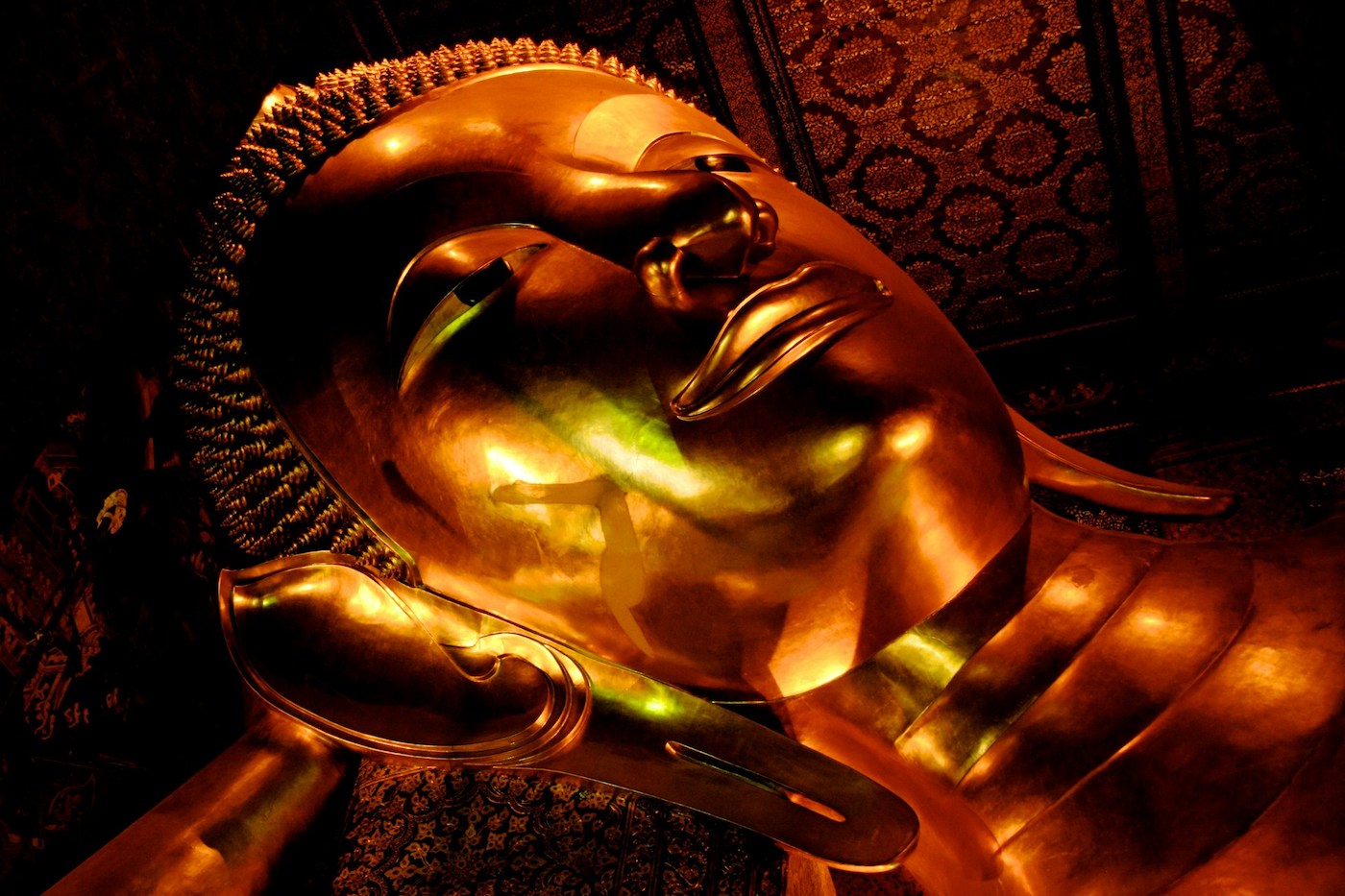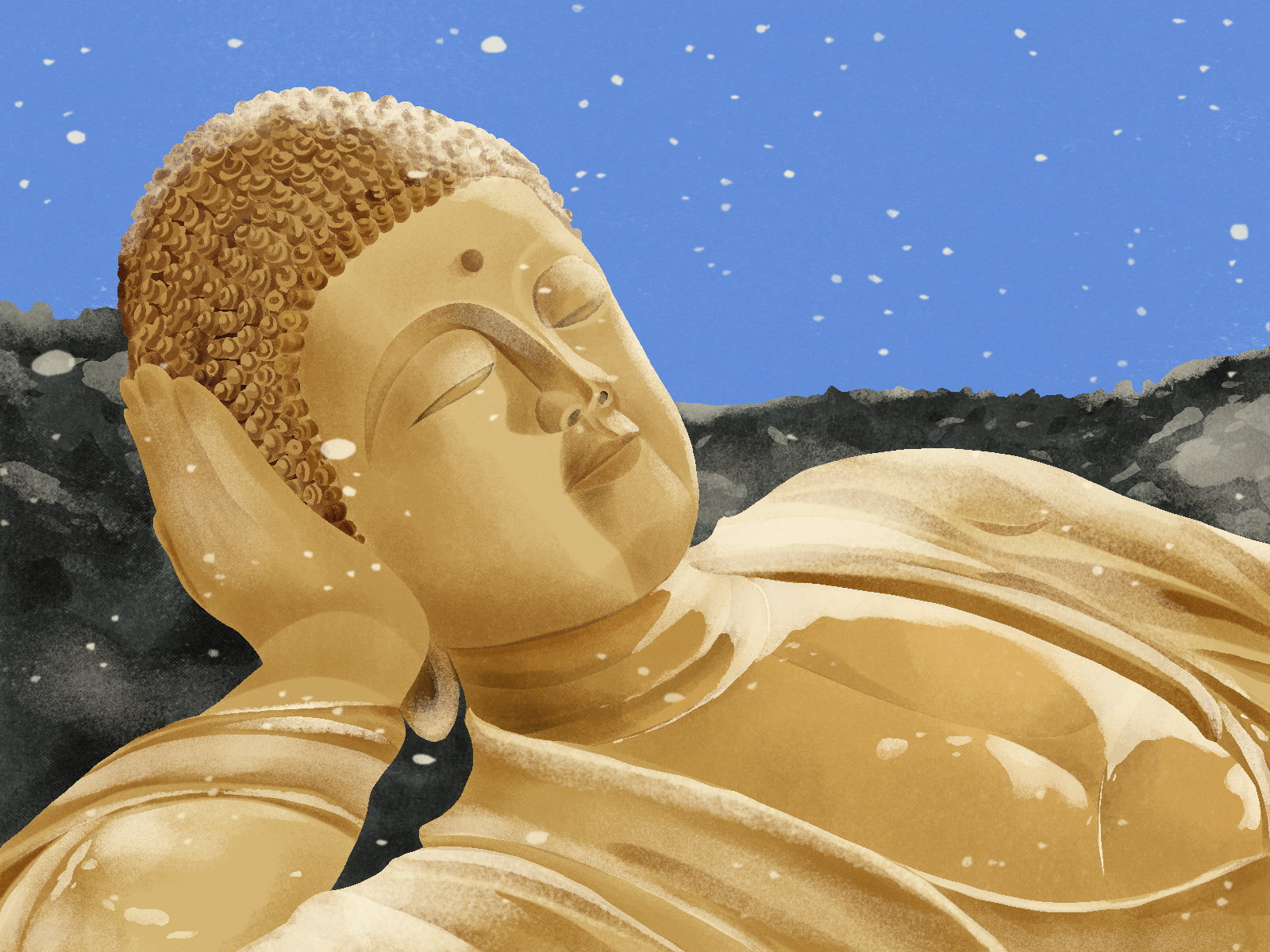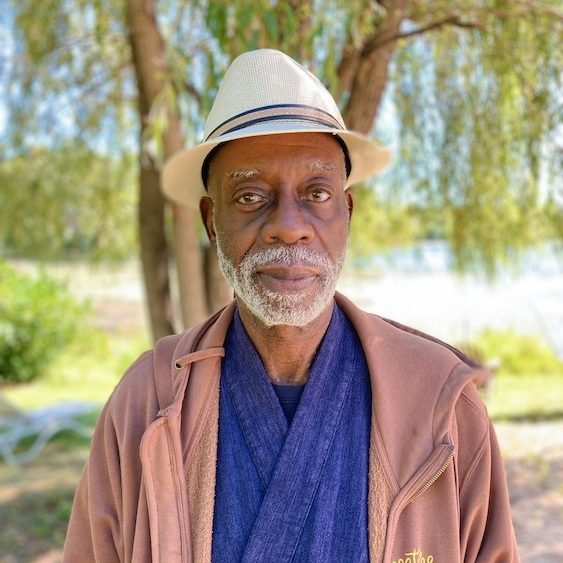The Anxiety of Existence
Anxiety is an inevitability of life. To confront it, we must come to terms with our own impermanence. The post The Anxiety of Existence appeared first on Tricycle: The Buddhist Review.

Foremost among the spiritual ills that cause human beings dissatisfaction is the complex and frequently misunderstood Buddhist concept of dukkha. While dukkha is sometimes understood as mere “suffering,” an examination of its nature and its putative causes reveals it to be—besides other affects and feelings—an acute anxiety, an existential discomfort, resulting from an intellectual and emotional failure to face up to the bare facts of existence (which include the nature of human personal identity). We can read the Buddha as claiming that to be alive—and crucially, deluded—is to be anxious, grieving, fearful, and angry; our first step toward relief is a true, unblinking understanding of the nature of the world and of human existence’s place in it. If we misunderstand the nature of the world and, more importantly, ourselves, we will be anxious, and suffer, in ways far worse than we need to.
To understand the Buddhist notion of anxiety, consider the four noble truths, which the Buddha offered to his disciples as antidotes to this world’s perplexities: There is suffering in this world; this suffering has an identifiable cause; this suffering can be eased; here is how you do so. Buddhism’s first noble truth notes the undeniable, acute human dissatisfaction with existence, an indelible component of which is dukkha. Our suffering is not mysterious and inexplicable; it is grounded in the bare facts of human existence. To understand it, we must unflinchingly accept the nature of the human condition, its finiteness, limitation, and circumscription by the metaphysical particulars of the world. Buddhism then tenders us the injunction that our emotional reactions to the world must pay attention to what we realize and know about its nature; our emotional reaction to suffering, loss, and pain must be tempered by this hard-earned insight and realistic appraisal of the relationship of our suffering to the constraints existence places on us.
The Buddha was never pessimistic about our prospects for deliverance and salvation; a view of Buddhism notable in the West as an unrelieved pessimism, a species of world nausea or world rejection, is profoundly mistaken. The Buddha instead offered an optimistic prognosis via the third noble truth: Suffering can be eased via the eightfold path revealed in the fourth noble truth, a combination of mental attitudes, stances, and commitments and practices geared toward the development of habits that let us live life more “skillfully.” Buddhism’s promise is that we can ease our suffering, our dukkha, our anxiety, by transforming the way we perceive and cognize the world; we can achieve salvation or deliverance, attain the blissful state of nirvana, through a form of awakening or “coming to see,” a long, slow process of removing those hindrances from our mind that have blocked us from seeing what and who we really are; it was this “failure to see” that underwrites our anxiety.
Our suffering is not mysterious and inexplicable; it is grounded in the bare facts of human existence. To understand it, we must unflinchingly accept the nature of the human condition, its finiteness, limitation, and circumscription by the metaphysical particulars of the world.
Dukkha is acute existential suffering. Dukkha is not the mere expression of discomfort at this world’s varied empirical misfortunes like the loss of a job or an income, or the physical pain and discomfort of illness and injury; it is not simple fear either of visible, identifiable threats like a snarling animal or a poisonous snake on our path. We know that this is so because even if jobs, incomes, secure housing, pain-and-illness-free days were to be secured, and dangerous animals neutered, we would still feel dukkha, for that feeling is the acute suffering of the sentient being confronted with the impermanence and transience of its lived world, with ignorance about its true self, and with the intractable difficulty of satisfying its endless, easily frustrated desires. The existential suffering we experience is grounded in what Mark Siderits calls “the frustration, alienation, and despair that result from the realization of our own mortality.” We are frustrated because we cannot finish our life’s projects or ever hope to reap their rewards in perpetuity; all such enjoyment must be limited by time tinged with fear of their loss. We cannot, during any given pleasurable state, avoid feeling that the state will end soon, to be replaced by its deprivation, or that we will grow sated, and begin longing, hopelessly and helplessly, for the lost desirable state. (Indeed, such pleasurable states, like beautiful days in the spring or fall, make us especially anxious as we dread their all-too-soon ending, their vulnerability to “wasting” by us, their possibly-never-to-be-repeated status.)
We experience alienation because we feel estranged in this world, in both the political and the economic realms, which are controlled and administered by forces not under our control or reckoning, and in the private realm, where we are alone and isolated in our unique, incommunicable, ineffable subjectivity, one that can never be made satisfactorily commensurate with anyone else’s. Ironically, this extreme isolation is most evident when we are in love and notice that even those whom we love the most, like our parents, our romantic partners, and our offspring, will remain at a deeply significant level utter strangers.
We are in despair because we realize we are limited and mortal, in life, in capacity, in achievement; we glimpse a Promised Land and know that it is impossible, materially or physically, that we should ever attain it; we sense we are powerless, in the face of nature, to prevent harm being done to those we love, and to ourselves; we cannot halt the inevitable progress of time, disease, decay, and death. (The American pragmatist William James, that most sensitive of philosophers, made note of “a horrible dread at the pit of my stomach, a sense of the insecurity of life”; this ineliminable sense, arising from our painful awareness of the tolls this world exacts, underwrites our dukkha. The inescapability of pain and loss, and our deep instinctive awareness and knowledge of it, no matter how well disguised, brings James’s understanding of his psychic afflictions close to the Buddhist formulation of dukkha.)
The day my daughter was born, I rejoiced, even as I acknowledged facts almost too painful for me to make note of here: that I cannot prevent her from suffering loss and despair of her own; that none of the force of my parental love and longing can change the nature of the world she has been born into; and finally, and shatteringly, that she too will pass someday. I hope I will not be alive then even as I realize that in so hoping, I am hoping only one of us will have to bear the pain of the other’s passing. These dark thoughts we must play with are the perennial shadows in our lives, ones no human being no matter how rich, powerful, and desirable, can avoid. We strive to leave our mark, to be memorable, but our fate—of special interest to beings who cannot stop asking what comes next—is oblivion. What then, of this world and all its demands?
For the Buddhist, existential anxiety is a species of dukkha; it is not neurosis; it is not a sign of freedom, authenticity, or the limitless possibility of action and choice. Instead, it is the state of being of an ignorant creature confused about its own nature, fumbling in the dark, hurting itself and others by its delusions and ignorance, by its fearful reactions to the ever-present possibility of decay, dissolution, and death in its life. The anxiety, the dukkha, it suffers from is pointless and needless and can and should be alleviated or eliminated.
For the Buddha, the anxious person was ignorant and deluded, clinging on to, grasping at, a quicksilver, ever-morphing reality, holding on for dear life to transient, ever-becoming possessions belonging to a nonexistent being. The anxiety we suffer in the Buddhist view is entirely explicable: We are always fearful of loss, of the possibility of all the insults the world can send our way, by the transience of all that we possess and hold dear. Looking ahead, we can foresee our own painful disease, decrepitude, and decay—each associated with a particular self, the “I,” the ego, me, given a particular name by my parents. Our resultant existential thirst, arising out of ignorance of our state of no-self, grasps at, desires, forms desperate, doomed attachments to “sense-pleasures, wealth, and power . . . ideas and ideals, views, opinions, theories, conceptions and beliefs.” This means a relentless growth of “desire, the will to be, to exist, to re-exist, to become more and more, to grow more and more, to accumulate more and more.” But such accumulations and possessions are precisely what is threatened by this eternally becoming, uncertain world we have no control over; so, we are always anxious.
Anxiety, then, arises within us; it is not caused by the world outside. Our minds are its creators; when we attempt to remove the object—some empirical threat—that causes fear and anxiety, we fail in attempting to control something other than our mind. If the world cannot be changed, if its dynamism and uncertainty is beyond our control, and if we cannot numb our senses, then all we can do is master our cognitive responses to the world: how we react to, interpret, and judge the world’s offerings or insults.
To do so, the first step is to pay attention to how the mind works, to study how the mind reacts to objects of fear, to irritations, insults, interruptions, deprivations, and losses. This heightened awareness of the interactions of mind and body is to be gained by disciplined, regular practices of directed meditation and mindfulness, a first-person study of our consciousness achieved by withdrawing our attention from this world’s distractions to ourselves; this awareness makes us concentrate on the present moment, thus enabling us to distance ourselves from regretting or remorsefully remembering the past, or fearfully and anxiously anticipating the future. The Buddha thus asked us to pay attention to our minds, the venues and sites of happiness, sorrow, anxiety, or pleasure; our true, exalted subject of study is ourselves; we should find out who and what we are to understand why we feel and think the way we do. Mindfulness and meditation—achieved via a variety of nontrivial techniques and practices that require steadfast commitment and discipline—enable us to study our thoughts; once we understand our relationship to our thoughts, we may understand we are not hostage to them; we may come to realize that these are “thoughts without a thinker.”
Placing the solution for living with anxiety in our minds is simultaneously disheartening and promising: Relief is so close, yet the proximity a mirage because the road to deliverance is long and tedious, for the Buddhist methods of mindfulness and meditation require an extraordinary effort for the attainment of the promised state of nirvana, placing them out of reach of most layfolk, a problem acknowledged by the Buddha himself, who offered multiple layers of analysis and practice in his sermons to his disciples, depending on their commitment to the life of enlightenment; not every poor soul who attended the Buddha’s sermons intended to become a mendicant or a monk, begging for alms, seeking the life of solitary contemplation. This suggests that while we may never reach the terminus of deliverance and salvation, we must accept, and live with, anxiety. We do not turn back from encounters with anxiety; we face up to it.
As a child, I had naively imagined there would be no suffering in this world, lulled into a false security by my parent’s comforting upbringing and nurturing, their apparent mastery of the cosmos. I had been disappointed, in the worst way of all, by the disappearance of those guardians, by the acute visible evidence that they were not permanent and indestructible. The failure of humanity, like mine, was a neurotic failure to face up to the constitutive features of existence; its stubborn refusal to accept existence’s stern demands was the reason for its misery. In Buddhism, I found an injunction to move on from a childish understanding of the world, to see it shorn of wistful illusion, of narcissistic self-serving delusion. Buddhism’s more esoteric claims that there was no self, just a bundle of perceptions and sensations to be found via introspection, did not resonate with my felt experiences, though its truth became apparent during my psychedelic experimentations, where I found that my self dissolved into the world around me. This sheer nothingness of the self was what puzzled the Buddha’s devotees, who asked repeatedly and persistently, “What happens to me after death?” In response, the Buddha insisted that this question was malformed; it simply did not fit the case; it was a category mistake. For a nonexistent self, the question of its survival or extinction or misfortunes did not arise.
Even if we never fully attain this state of belief in the thesis of no-self, our contemplative practices that force our attention on the content of the four noble truths may enable us to at least maintain an ironic—and possibly even amused—distance from the very idea of an enduring, identical self that can permanently possess any of this endlessly becoming world’s always-changing-and-destructible goods. Perhaps this is why the reclining or seated Buddha is always depicted with a faint smile on his face; he can look on this world’s play and the delusions of its inhabitants with a gaze of amused detachment, one yet filled with compassion for his fellow sufferers.
For the Buddha, anxiety and suffering arise from dispositions, tendencies, and habits; our salvation lies in retraining ourselves through slow, resolute, patient, and persistent effort over the course of a lifetime; our engagement in this activity is our reward and deliverance. We are never trying to seek an end point, a stage at which we will be miraculously delivered from anxiety. It is the act of working on ourselves that is our only deliverance; we are never to be brought anywhere, to any resting point of final repose. Our journey will be suffused with anxiety; we must accept this companion while we walk on, into life.
♦
 Photo courtesy Princeton University Press
Photo courtesy Princeton University PressExcerpted from Anxiety: A Philosophical Guide. Copyright © 2024 by Samir Chopra. Reprinted by permission of Princeton University Press.

 ValVades
ValVades 
































